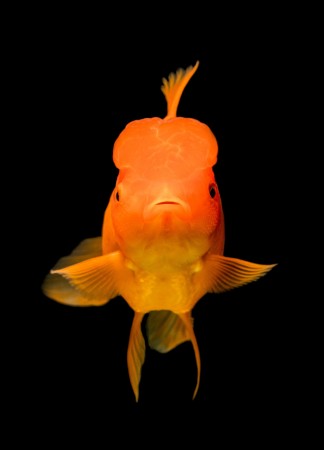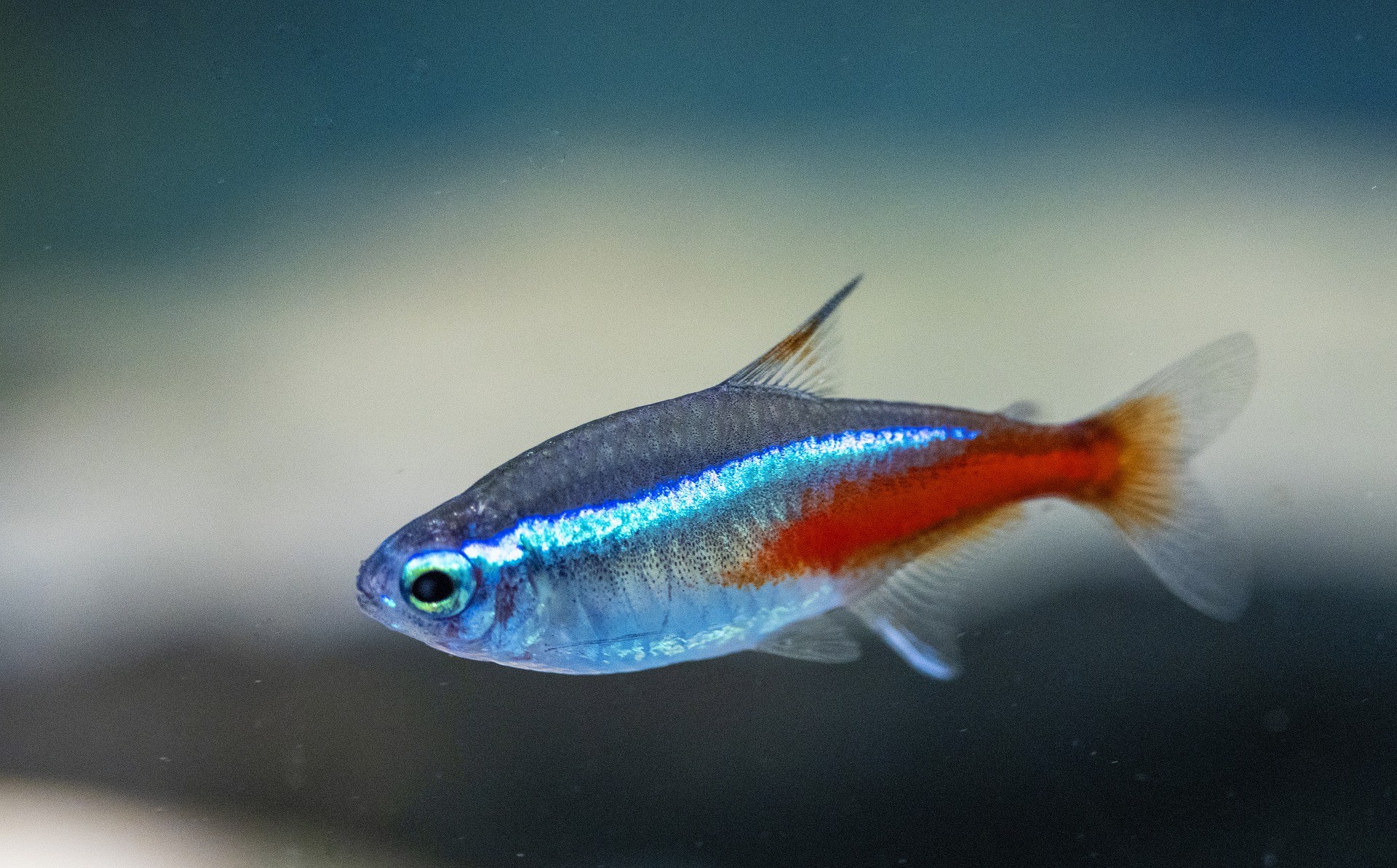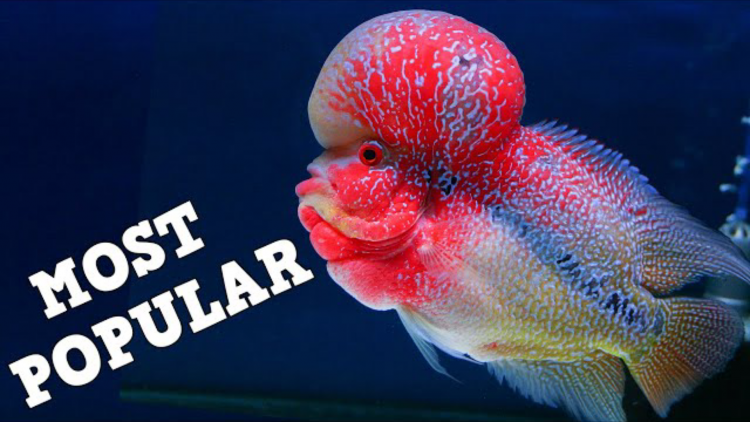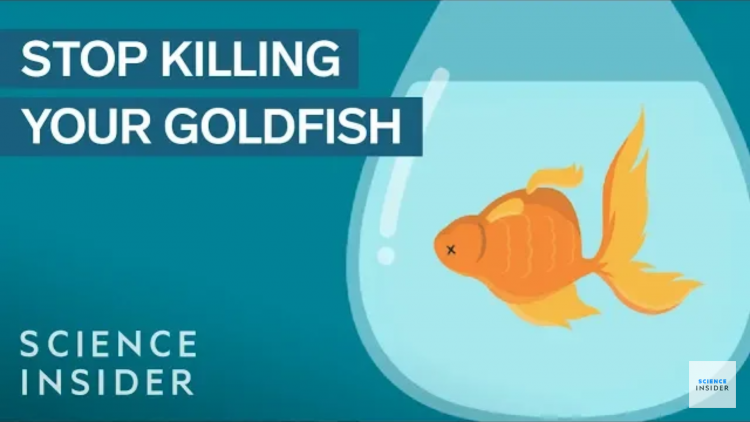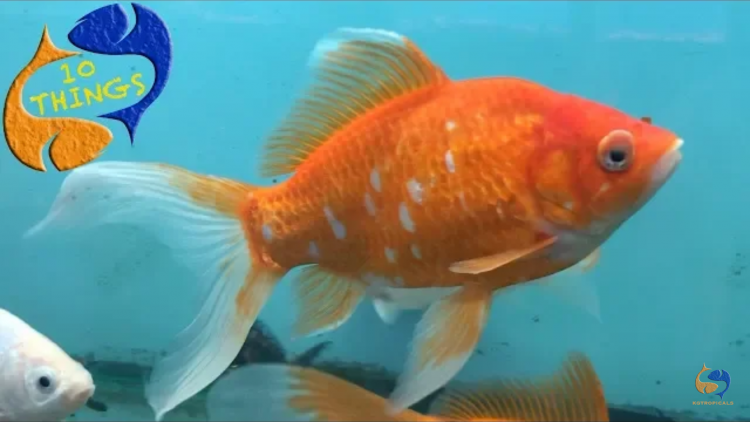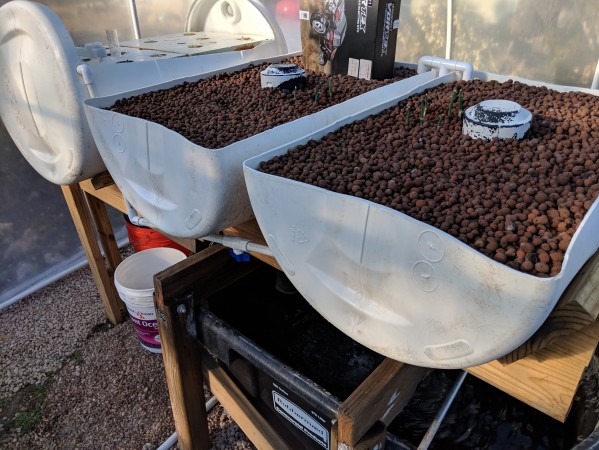- Name:
Oranda Goldfish
(View AKA's) - Family: Cyprinidae
- Species: Goldfish
- Scientific Name: Carassius auratus
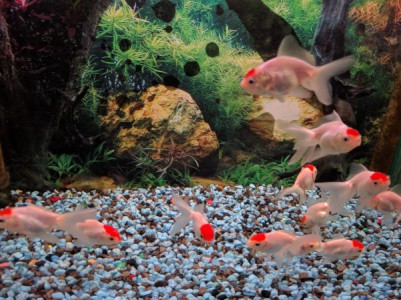

General info about Oranda Goldfish
These fish have a wen which is a fleshy growth on the top of their heads that starts to grow at about 3-4 months but only at 2-3 years is fully developed. They have a large, round shape and a long, split tail fin. These fish can reach 7 inches. Oranda Goldfish are available in a variety of colors like black, calico, red, chocolate and blue. There also varieties with different patterns and more than one color, for example, the Redcap Oranda is completely white but its wen is red. There is also a variety of Oranda Goldfish that has telescope eyes called the Oranda Fancy Goldfish. Oranda Goldfish is very similar to the Lionhead Goldfish, the only difference is that the former has a dorsal fin and the latter doesn’t. This Goldfish variety is one of the oldest, currently there are more than 125 varieties of Goldfish.
To keep these fish in captivity, water pH should be between 6.0 and 8.0 and water temperature should range from 65ºF to 72ºF. The tank should have a gravel substrate and silk plants. They can be kept in a community tank with other slow moving tankmates. They can be kept individually or in group. A 30 gallon tank is enough for a single specimen, for each individual added to the tank 10 gallons should be added.
Oranda Goldfish Diet & Nutrition
This species is omnivorous. In captivity, they can be fed with dried foods and their diet should be complemented with live or frozen foods.
Breeding & Spawning Oranda Goldfish
To breed this species in captivity, the fish should be kept in a 20 gallon tank and fed with live food. The water temperature should be 60ºF and should be warmed 3ºF per day until they spawn. As temperature increases, the male will start to pursue the female which can last for several days, the male will start to push the female this will make her drop her eggs which the male will then fertilize. At this time, the adults should be removed from the tank to prevent them from eating the eggs. The eggs take 4 to 7 days to hatch.
Common Diseases with Oranda Goldfish
There is a parasite that latches onto goldfish called Goldfish ICH, this parasite feeds on the goldfish until it is fully grown, then it reproduces and starts the cycle again.
Oranda Goldfish Origin
This species originated in China. It inhabits slow moving or still rivers.
Caution with Oranda Goldfish
It is very important to keep the Oranda’s tank clean because its wen is susceptible to infections from debris, bacteria or fungi.
Original Detail
| Name | Species | Family | Scientific Name | More Detail | Added by |
|---|---|---|---|---|---|
| Oranda Goldfish | Goldfish | Cyprinidae | Carassius auratus | These fish have a wen which is a fleshy growth on the top of their heads that starts to grow at about 3-4 months but only at 2-3 years is fully developed. They have a large, round shape and a long, split tail fin. These fish can reach 7 inches. Oranda Goldfish are available in a variety of colors like black, calico, red, chocolate and blue. There also varieties with different patterns and more than one color, for example, the Redcap Oranda is completely white but its wen is red. There is also a variety of Oranda Goldfish that has telescope eyes called the Oranda Fancy Goldfish. Oranda Goldfish is very similar to the Lionhead Goldfish, the only difference is that the former has a dorsal fin and the latter doesn’t. This Goldfish variety is one of the oldest, currently there are more than 125 varieties of Goldfish. To keep these fish in captivity, water pH should be between 6.0 and 8.0 and water temperature should range from 65ºF to 72ºF. The tank should have a gravel substrate and silk plants. They can be kept in a community tank with other slow moving tankmates. They can be kept individually or in group. A 30 gallon tank is enough for a single specimen, for each individual added to the tank 10 gallons should be added. |
PalaciosAn |


